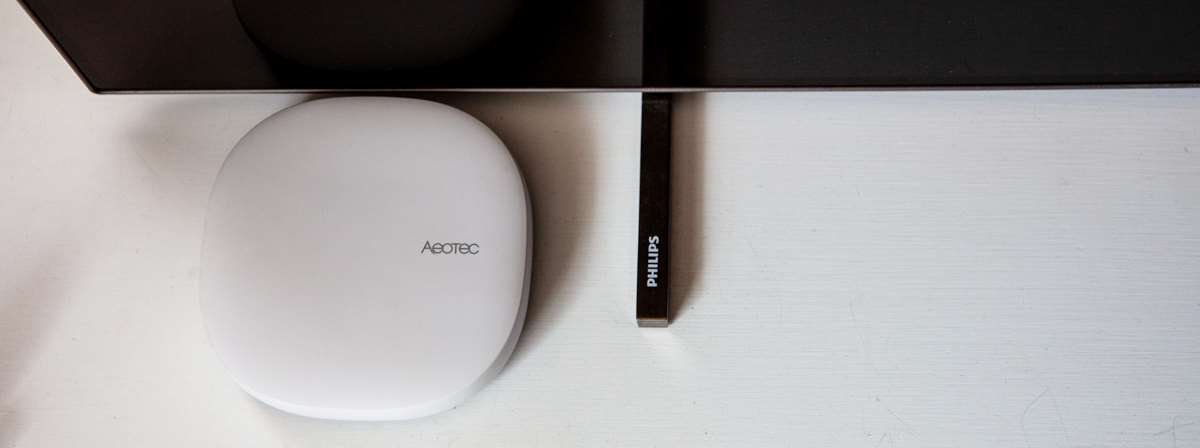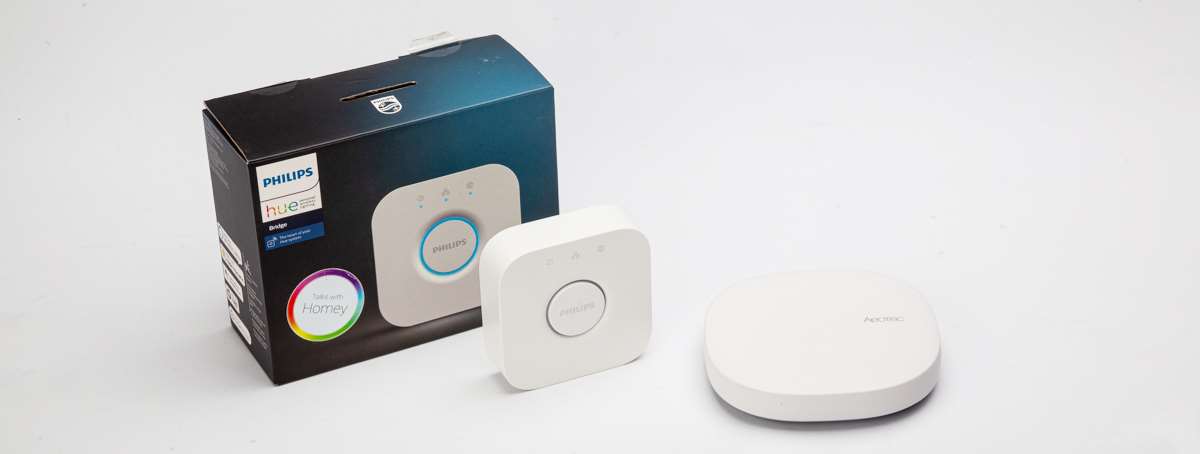Review:
Aeotec Smart Home Hub - Smartthings

Network Devices:
The last type of devices that we are going to look at are the network devices. These are devices that work via WiFi or via the internet (Cloud environment). Think of washing machines, televisions, refrigerators or your thermostat.
If you look in the APP, you will mainly see Samsung devices. This is of course not so strange, because this hub was from Samsung. We do not own any Samsung devices ourselves, but assume that this will work flawlessly.

Shelly 1 PM:
With the Z-Wave devices we had tested a built-in switch that replaces your existing switch and makes it smart. You can then continue to use your existing lamp and your trusted wall switch.
This switch from Shelly is easy to build in. It is a matter of removing your old switch and connecting the Shelly via the supplied diagram. You can view an extensive review of this product here: link.
Shelly is a manufacturer that focuses on WiFi-enabled products. They have a wide range of motion sensors, door contacts and various built-in switches. They also have a switch with which you can wirelessly control your RGBW-Led strip.
Back to the Shelly 1. To add it to Smartthings hub, we must first install it via the supplied schematic and provide it with power. The Shelly 1 will create a hotspot so you can connect it to your own network. You do this by installing the Shelly APP. You can find the detailed steps for this in this review.
If everything is running well in the Shelly APP, we need to make sure that the Cloud option is turned on. The Smartthings hub cannot connect directly (locally) to the Shelly. Something to keep in mind, because if the internet doesn't work, you can't control your lamp. If you find this a problem, you'd better choose a Zigbee or Z-Wave product. These do work locally and also work without the hub.
To install:
To add the Shelly we go back to the Smarthings hub and click on devices and on the plus sign. Then we search for Shelly and follow the steps in the APP. He is found almost immediately and the whole responds quickly.
Installation screens:
Operation:
We get an on/off switch. In the Shelly APP we also see the power consumption, this is not the case in the Smartthings APP. That's too bad.

Philips HUE:
The next WiFi device that we are going to add is the Philips HUE hub. Now you may think: but the Philips lamps also work with Zigbee, right? That's right, but you can add it in 2 ways. This is directly on the hub or via the Philips hub. All communication then runs through this hub. The advantage of this is that you can operate the lamps in 2 places. The disadvantage is that everything runs via the Cloud environment and that can cause delays.
This part of the review is about networking so we're going to add it through the hub.
To install:
We go back to devices and click on the plus sign and search for Philips, press "lamps" and "add" via the hub. Now we have to unplug the network cable from the Philips Hub and then plug it back in. Now the hub will reconnect and we have to wait until all the lights are blue. If this is the case, we press the button of the Philips Hub, we see almost immediately that it is found by the Smartthings hub.
After a few seconds we see all the devices and can operate them.
Installation screens:
We have now added some devices. When we look at the list of supporting devices, we notice that we are missing quite a bit. For example, there is no support for my Philips TV, Onkyo amplifier and we cannot, for example, add "my solar panels". So there is still work to be done for Aeotec.




















